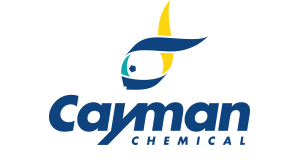CCN3 (human, recombinant)
CCN3 (human, recombinant)
SKU
CAY41888-100
Packaging Unit
100 µg
Manufacturer
Cayman Chemical
Availability:
loading...
Price is loading...
Shelf life (days): 365.0
Formulation: Lyophilized from sterile 50 mM Tris, pH 7.4, with 100 mM sodium chloride, 0.5 mM phenylmethylsulfonyl fluoride, 10 mM imidazole, and 10% glycerol
Uniprot ID: P48745
Purity: ≥94% estimated by SDS-PAGE
Formula Weight: 0.0
Notes: Cellular communication network factor 3 (CCN3) is a growth factor and member of the CCN protein family with roles in stem cell regulation, hematopoiesis, and the regulation of bone growth, as well as cell growth, differentiation, and migration.{67857,67858} It is a secreted protein that is associated with the extracellular matrix (ECM) and is composed of a signal peptide linked to four structural domains: an insulin-like growth factor binding protein domain (IGFBP), a von Willebrand type C repeat (VWC), and a thrombospondin type I domain (TSP-1), all associated with protein binding, and a cysteine knot carboxyl terminal that promotes oligomerization. CCN3 is present in various stem cell lineages, including chondrogenic, osteogenic, and hematopoietic lineages, and acts through the core stem cell signaling pathways mediated by Notch and bone morphogenetic protein (BMP).{67857,67859} Ccn3 expression is upregulated during early phase bone regeneration, and Ccn3-/- mice exhibit accelerated bone regeneration compared to wild-type mice, indicating Ccn3 is a negative regulator of this process.{67859} However, Ccn3 expression increases in KiSS1 neurons in the arcuate nucleus (ARCKiSS1) in female mice during lactation, and reduction of Ccn3 expression in ARCKiSS1 induces bone loss in female lactating mice fed a low-calcium diet.{67860} Cayman’s CCN3 (human, recombinant) protein can be used for binding assays. This protein consists of 337 amino acids, has a calculated molecular weight of 37 kDa, and a predicted N-terminus of Thr32 after signal peptide cleavage. By SDS-PAGE under reducing conditions, the apparent molecular mass of the protein is 47 kDa due to glycosylation.
Formulation: Lyophilized from sterile 50 mM Tris, pH 7.4, with 100 mM sodium chloride, 0.5 mM phenylmethylsulfonyl fluoride, 10 mM imidazole, and 10% glycerol
Uniprot ID: P48745
Purity: ≥94% estimated by SDS-PAGE
Formula Weight: 0.0
Notes: Cellular communication network factor 3 (CCN3) is a growth factor and member of the CCN protein family with roles in stem cell regulation, hematopoiesis, and the regulation of bone growth, as well as cell growth, differentiation, and migration.{67857,67858} It is a secreted protein that is associated with the extracellular matrix (ECM) and is composed of a signal peptide linked to four structural domains: an insulin-like growth factor binding protein domain (IGFBP), a von Willebrand type C repeat (VWC), and a thrombospondin type I domain (TSP-1), all associated with protein binding, and a cysteine knot carboxyl terminal that promotes oligomerization. CCN3 is present in various stem cell lineages, including chondrogenic, osteogenic, and hematopoietic lineages, and acts through the core stem cell signaling pathways mediated by Notch and bone morphogenetic protein (BMP).{67857,67859} Ccn3 expression is upregulated during early phase bone regeneration, and Ccn3-/- mice exhibit accelerated bone regeneration compared to wild-type mice, indicating Ccn3 is a negative regulator of this process.{67859} However, Ccn3 expression increases in KiSS1 neurons in the arcuate nucleus (ARCKiSS1) in female mice during lactation, and reduction of Ccn3 expression in ARCKiSS1 induces bone loss in female lactating mice fed a low-calcium diet.{67860} Cayman’s CCN3 (human, recombinant) protein can be used for binding assays. This protein consists of 337 amino acids, has a calculated molecular weight of 37 kDa, and a predicted N-terminus of Thr32 after signal peptide cleavage. By SDS-PAGE under reducing conditions, the apparent molecular mass of the protein is 47 kDa due to glycosylation.
| SKU | CAY41888-100 |
|---|---|
| Manufacturer | Cayman Chemical |
| Manufacturer SKU | 41888-100 |
| Package Unit | 100 µg |
| Quantity Unit | STK |
| Product information (PDF) | Download |
| MSDS (PDF) |
|

 Deutsch
Deutsch










